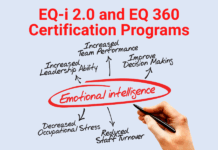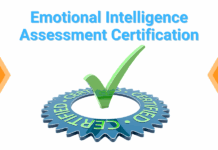
Imagine the lessons you would have learned if you had worked directly for Steve Jobs. Or for Elon Musk. Imagine if you could have worked for them both. Anna Yen did just that.
Yen is the author of the new novel Sophia of Silicon Valley. The story follows Sophia as she's fired from an investment bank, rises through the ranks of a top Silicon Valley law firm, and eventually becomes an investor relations guru, first, to an eccentric passionate CEO who wears jeans and black T-shirts and later for a young genius founder who wants to build electric cars and rocket ships. If that sounds really familiar, it should. Yen worked under Steve Jobs at Pixar and Elon Musk at Tesla.
I recently interviewed Yen for the LEADx Leadership Show where we discussed her experiences working with some of the biggest names in tech. (The interview has been lightly edited for space and clarity.)
Kevin Kruse: I have to ask, how much of your book is true?
Anna Yen: I can't say what percentage of it is real; I would say the majority of it is. It's just that my career has been spanned over 20+ years, and to get all of the lessons that I wanted to teach my readers, I needed to compress it into 300 pages. In that regard, the timeline is not real and you really just have to cut down the number of characters that you come across in your life.
Kruse: You’ve said that you view Jobs as a positive example of leadership. Why?
Yen: There's no doubt you have to be really thick-skinned to work for people like Steve Jobs or Elon Musk. If you can just sort of look past that in a way, you start to develop an understanding and an empathy for these people. I think I was able to do that right from the start, which allowed me to get past any fear or intimidation and watch and learn.
Jobs was not a teacher. He's not a great mentor either, for that matter, because he doesn't proactively explain things to you. As a leader, he was incredible in my view because what he had was a vision and the ability to evangelize it in a way that people wanted to get behind it. Almost like a pied piper, right?
He could do that because he did a tremendous amount of work and made a huge effort to understand his audience or his target, and really what they wanted, what they needed, what would resonate with them. I think also as a leader, I really admired how he had such confidence. We would go see investors, and they always loved to tell him how to run his business. I think that's true for any investor talking to a CEO, but Steve would ignore them completely. He wasn't affected by them at all, and he had the confidence to be able to do that but he also knew what he did not know. In areas that he wasn't interested in or competent in, he hired the best people to do it. I think very few leaders will do that.
Kruse: When did you meet Musk for the first time?
Yen: I met Elon in an interview. I was interviewing at Tesla. I'd come pretty late in the game. I sort of didn't fit the traditional pedigree that the CFO had been looking for specifically, but no one else had made it past Elon. It was very brief. He asked me a couple of questions, one that I specifically remember which is, “You've never done anything with cars before, so why should I hire you?” That was a great question, but I passed.
Kruse: What was your great answer?
Yen: I explained to him that what he was doing with Tesla was incredibly hard and something that would require a lot of convincing with Wall Street. It was not dissimilar to what Steve was trying to do, Steve and John Lasseter and Ed Catmull and Lawrence Levy back at Pixar when they were trying to convince Wall Street they could displace the 800-pound gorilla that was Disney. America had not had a new car manufacturer in decades, and there was no reason Elon should've been able to do it.
Kruse: You use your novel as a way to share lessons you learned while working at Pixar and Tesla. What’s one of your favorite lessons?
Yen: “Six minutes at a time” is a big one for me. I've just found it really useful whether I'm dealing with cancer or whether I've just got this overwhelming schedule at work with a list of thousands of things to do. It's easy to start spinning your wheels. When I find that I do that or when I start to work myself up, or get worried or afraid, I just tell myself, “Six minutes. What do I have to do in the next six minutes?” I find that it is incredibly effective.
Kruse: Tell our listeners where that comes from. Why six and not five?
Yen: That came from the law firm. It's strange that you would use that as a lesson, but I certainly found it helpful.
Kruse: What’s another lesson that helped in your career?
Yen: The other thing I would say is that I don't overanalyze. That's why six minutes at a time helps because I think everyone–it seems to be getting worse in terms of generations–is becoming incredibly analytical and almost paralyzed. I see that a lot in the workplace for the younger people that work with me. It's almost like analysis paralysis, as far as relationships or work.
And I always find “duck feathers” to be another helpful one. It's easy to be affected by what other people say, so I always say to myself, “Duck feathers.” Just to let it roll off my back.
__
When you are working for tough demanding leaders, a thick skin will help you to see past their flaws so you can focus on the work—sometimes in six-minute increments.





